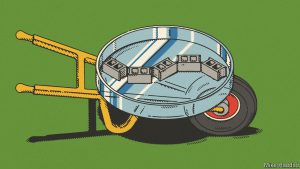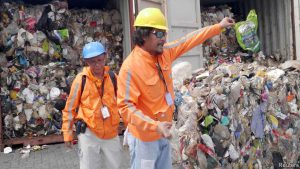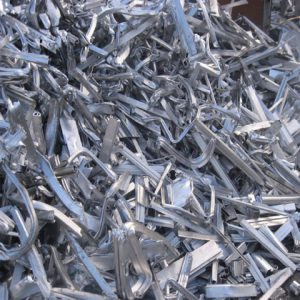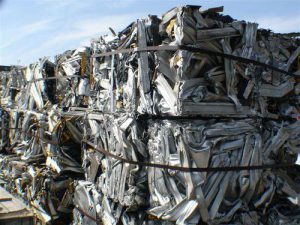A plan to reclaim the most expensive part of a rocket comes tantalisingly close to working
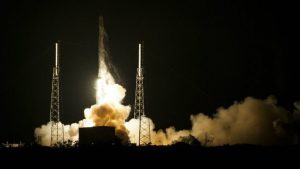
Jan 10th 2015
IF CARS were like rockets, their drivers would blow them up whenever they reached their destination and then buy a new one for the next trip. For after a rocket launch, everything except the tiny payload that sits on the very top is either left to splash into the ocean, or abandoned to drift in space.
That spectacular wastefulness is one reason that rockets are so expensive. Engineers have long dreamed of building rockets that could be used more than once, but their only serious attempt so far – America’s semi-reusable Space Shuttle – turned out to be expensive and unreliable. But plenty of people are still toying with the idea, especially among the scrappy firms that make up the “New Space” industry. On January 10th, SpaceX, the most successful of those firms, ran the latest test of its own re-usable rocket technology.
The firm’s main mission was to fly cargo to the International Space Station, something for which it has a $1.6 billion contract with NASA. But its second task was to see if it could persuade the first stage of its Falcon 9 rocket to re-enter the Earth’s atmosphere, right itself and land upright on a robotic ocean-going landing pad. If it can master the technology, then the firm’s launch prices, already the lowest around, should fall even lower.
This is not the first time the firm has tested its technology. One recent attempt, in July, aimed at a soft splashdown in the ocean. It worked perfectly right up until the moment the rocket hit the water. As Elon Musk, SpaceX’s boss, put it on Twitter, it then “lost hull integrity (ie kaboom)”. But Saturday’s flight was the first time the firm—or, indeed, anyone—had attempted to land a rocket’s first stage on something solid.
It would appear that this more ambitious rocket-return mission also very nearly worked. Nine and a half minutes into an otherwise flawless launch, the rocket’s first stage arrived at the floating spaceport. But it came down too fast, damaging itself and equipment on the platform. Mr Musk again took to Twitter, describing the recovery attempt as “close, but no cigar this time”.
Close, but no cigar. This time. https://t.co/JowUE6a1D7
— SpaceX (@SpaceX) January 16, 2015
Technical difficulties such as this are valuable learning experiences in an industry that is ripe for the kind of plucky innovation that SpaceX has become known for. To have come close is to have come closer than any space-faring outfit to making launch costs less, as it were, astronomical. Saturday’s landing attempt was, strictly, a failure. But as Mr Musk put it, the near-miss “bodes well for the future”.
Update Jan 16th: Mr Musk has now tweeted a Vine (short video clip) of the first stage exploding as it tries to land on the drone ship. To be continued.
